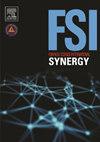消除的问题:为什么法医比较需要假阴性率
Q1 Social Sciences
引用次数: 0
摘要
这篇文章检查了被忽视的风险假阴性错误产生的消除在法医枪支比较。虽然法医学最近的改革侧重于减少误报,但排除——通常基于阶级特征或直觉判断——尽管有可能排除真实来源,却很少受到实证审查。在涉及一个封闭的嫌疑犯池的案件中,排除可能起到事实上的识别作用,造成严重的错误风险。对现有有效性研究的回顾表明,许多报告只报告假阳性率,未能提供方法准确性的完整评估。这种不对称被专业指南(如来自AFTE的指南)所强化,并在包括NAS和PCAST在内的主要政府报告中得到呼应。这篇文章认为,消除和识别一样,必须通过严格的测试来验证,并以透明的错误率报告。它进一步警告说,在缺乏经验支持的情况下,不要使用“常识”排除,并强调了当审查员意识到调查限制时,背景偏见的危险。提出了五项政策建议,以提高对排除的科学处理和法律解释,包括平衡报告假阳性和假阴性率,验证直觉判断,明确警告不要在封闭池场景中使用排除来推断有罪。不进行改革,淘汰将继续逃避审查,使无法衡量的错误永久化,并破坏法医结论的完整性。本文章由计算机程序翻译,如有差异,请以英文原文为准。
The problem with eliminations: Why forensic comparisons need false negative rates
This article examines the overlooked risk of false negative errors arising from eliminations in forensic firearm comparisons. While recent reforms in forensic science have focused on reducing false positives, eliminations — often based on class characteristics or intuitive judgments — receive little empirical scrutiny despite their potential to exclude true sources. In cases involving a closed pool of suspects, eliminations can function as de facto identifications, introducing serious risk of error. A review of existing validity studies reveals that many report only false positive rates, failing to provide a complete assessment of method accuracy. This asymmetry is reinforced by professional guidelines, such as those from AFTE, and echoed in major government reports, including those from NAS and PCAST. The article argues that eliminations, like identifications, must be validated through rigorous testing and reported with transparent error rates. It further cautions against the use of “common sense” eliminations in the absence of empirical support and highlights the dangers of contextual bias when examiners are aware of investigative constraints. Five policy recommendations are proposed to improve the scientific treatment and legal interpretation of eliminations, including balanced reporting of false positive and false negative rates, validation of intuitive judgments, and clear warnings against using eliminations to infer guilt in closed-pool scenarios. Without reform, eliminations will continue to escape scrutiny, perpetuating unmeasured error and undermining the integrity of forensic conclusions.
求助全文
通过发布文献求助,成功后即可免费获取论文全文。
去求助
来源期刊

Forensic Science International: Synergy
Social Sciences-Law
CiteScore
4.90
自引率
0.00%
发文量
75
审稿时长
90 days
 求助内容:
求助内容: 应助结果提醒方式:
应助结果提醒方式:


